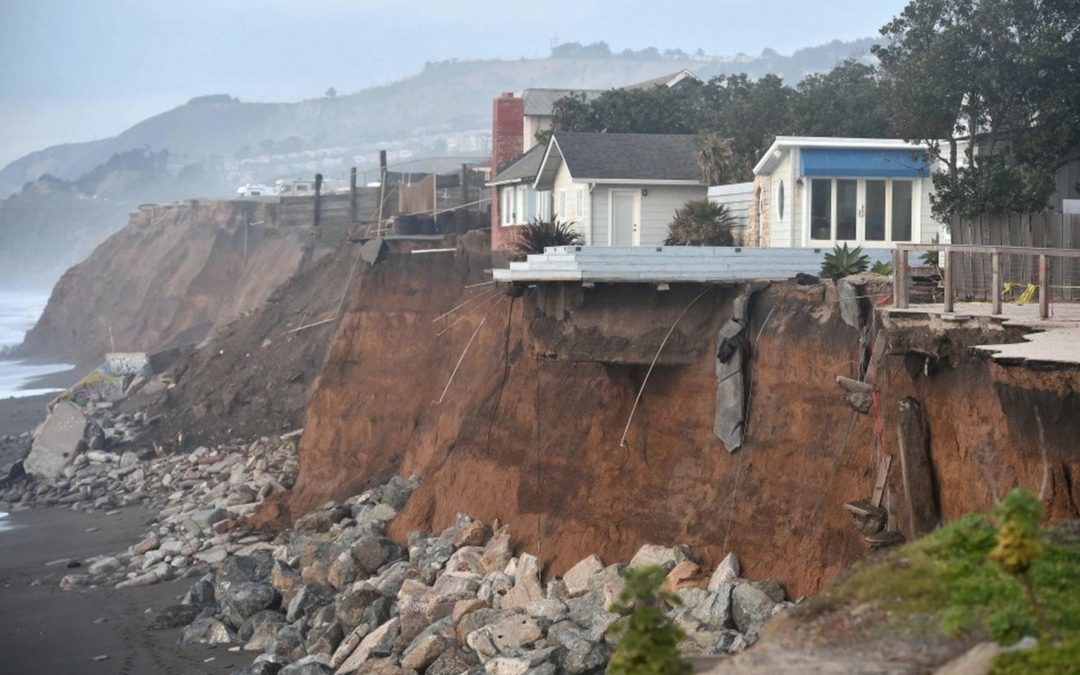SOURCE: Washington Post
DATE: July 11, 2018
SNIP: Like an ax slowly chopping at the trunk of a massive tree, waves driven by sea-level rise will hack away the base of cliffs on the Southern California coast at an accelerated pace, a recent study says, increasing land erosion that could topple some bluffs and thousands of homes sitting atop them.
California officials from Santa Barbara to San Diego will face an awful choice as the sea rises, the U.S. Geological Survey study says: save public beaches enjoyed by millions, or close them off with boulders and concrete walls to armor the shore and stop the waves in a bid to save homes.
The study predicts coastal land loss on an unimaginable scale over the remaining century, up to 135 feet beyond the existing shoreline. “For the highest sea-level rise scenario, taking an average cliff height of more than 25 meters, the total cliff volume loss would be more than 300 million meters by 2100,” it says.
One of the study’s authors, Patrick Barnard, a USGS research geologist, tried to explain the issue in a way that laypeople can understand. “It’s a huge volume of material,” he said. “We place this in a context of dump truck loads. It would be 30 million dump trucks full of material that will be eroded from the cliffs.” The trucks would stretch around the globe multiple times, he said.
According to the statement’s synopsis of the study, “Without the supply of sand from eroding cliffs, beaches in southern California may not survive rising sea levels — and bluff-top development may not withstand the forecast 62 to 135 feet cliff recession.” As a result, the authors wrote, “managers could be faced with the difficult decision between prioritizing private cliff-top property or public beaches” when they allow or ban hard shore protections.
“Beaches are perhaps the most iconic feature of California, and the potential for losing this identity is real,” Vitousek, the study’s lead author, said in the statement. He was a postdoctoral fellow at the USGS when this study was conducted and is now a professor in the department of civil and materials engineering at the University of Illinois at Chicago. “The effect of California losing its beaches is not just a matter of affecting the tourism economy. Losing the protecting swath of beach sand between us and the pounding surf exposes critical infrastructure, businesses and homes to damage.”

